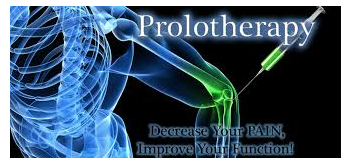Sacroiliac joint (SIJ) pain is more common than you think. What is the SIJ? Well, you know those dimples you have at the top of your buttocks, one on the left and one on the right? That is the location of the top of the sacroiliac joints. Imagine an upside-down triangle starting at those dimples down to your butt crack…that is the path of the SIJ’s. The sacroiliac joints connect the pelvis (iliac bones) to the sacrum (the lowest portion of the spinal column), and transfer force and weight between the upper body and the lower body.
These joints have some mobility which increases in women after childbirth. The ligaments holding the pelvis tight are relaxed during pregnancy by a hormone called relaxin. Sometimes the increased SIJ mobility continues indefinitely after the baby is born, and never gets back to the pre-childbearing level of tautness. The SIJ’s are true synovial-lined joints that can swell just like any other arthritic joint. They can cause a radiating pain that starts in the buttock and radiates down the back of the leg, resembling sciatica. In fact, some practitioners believe that most cases of “sciatica” are actually due to SIJ dysfunction.
You ask yourself, “Do I have SIJ pain? Is that what my low back pain is?” To find out whether your low back/buttock pain is due to SIJ dysfunction, your doctor can do some physical exam maneuvers that will stress the SIJ, which if your usual pain is reproduced or increased, makes it likely to be SIJ dysfunction. Imaging techniques such as x-ray or MRI are not always necessary, but can show arthritic changes, inflammation, or sclerosis.
Why do I have SIJ pain? You might have increased mobility at the SIJ due to ligament laxity, inflammation of the joint due to synovitis, arthritis of the joint due to wear and tear (sports, gymnastics, trauma), spondylitis due to an inherited condition, or sclerosis of the joint due to degenerative changes.
What can be done? SIJ dysfunction is a condition that typically has flairs and remissions. There are many treatments that are useful in managing SIJ dysfunction. The first and foremost treatment is prevention (prevention of SIJ pain or prevention of worsening of SIJ pain). This includes maintaining a healthy body weight, because carrying extra weight on the bones of your lumbosacral spine and pelvis is a recipe for pain. Maintaining good nutrition and hydration to keep the bones, joints, ligaments, and tendons of the SIJ region healthy is also necessary. If you have the weight, nutrient, and hydration pieces squared away, but still have SIJ pain, then it is time to institute a targeted exercise program for strengthening and stretching, and some treatment modalities.
Exercises to limber up and strengthen the buttock, low back, hip, and hamstring muscles can be taught to you by a physiatrist, physical therapist or qualified personal trainer. The gluteus maximus, gluteus medius, piriformis, and quadratus lumborum muscles attach in proximity to the SIJ. Targeting these muscles can help to stabilize the SIJ. While you are strengthening the region, it might help to have your physician or physical therapist to use kinesiology tape in a crossing-over fan pattern over the SIJ region to provide proprioceptive feedback.
As strange as it sounds, you can also have your physician or acupuncturist try using a press-tack tiny acupuncture needle on your ear at the lumbosacral site. Some patients find the ear acupuncture treatment extremely helpful at decreasing SIJ pain during flairs. Full acupuncture sessions might also help to bring relief from SIJ pain.
Lastly, there are injections that can be done for SIJ pain. Traditionally, steroids were used when injecting the SIJ to decrease inflammation in the joint, but studies have now revealed that steroids can damage cartilage and cause negative side effects. I prefer to inject natural anti-inflammatory substances into the SIJ to decrease pain and inflammation. If a person has chronic or repeated SIJ pain, then Prolotherapy is a more definitive, longer-lasting treatment. Prolotherapy is injecting a safe, proliferative substance to the whole SIJ region where the ligaments attach to the bones to promote healing of the involved ligaments. After a series of Prolotherapy injections, a person can typically expect to have lasting pain relief unless they reinjure their SIJ at another time.

















